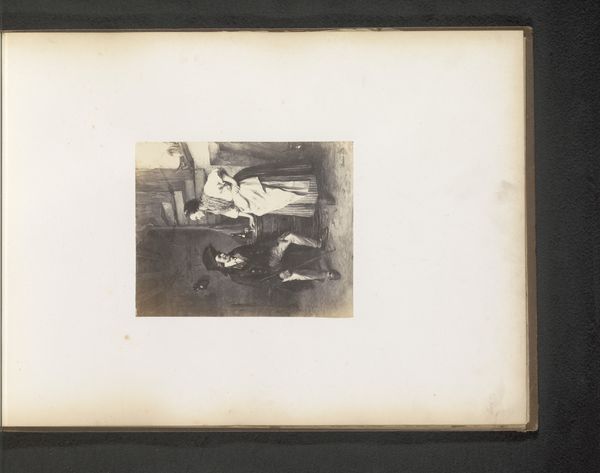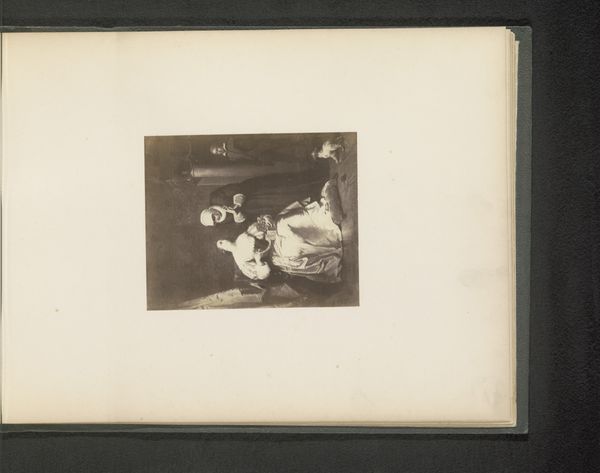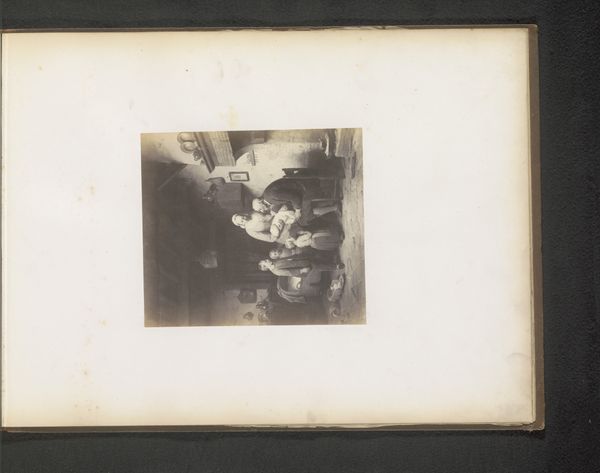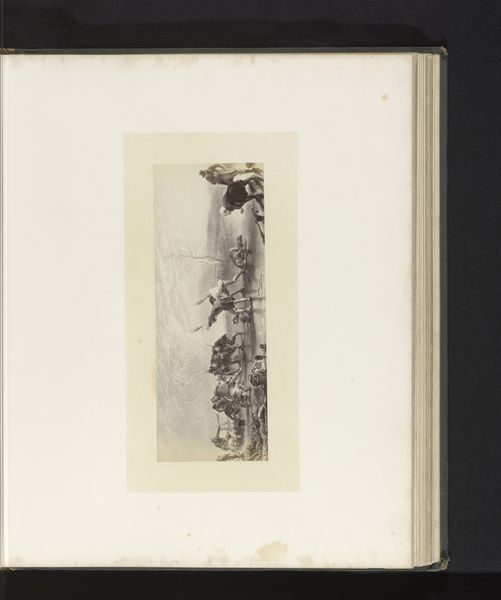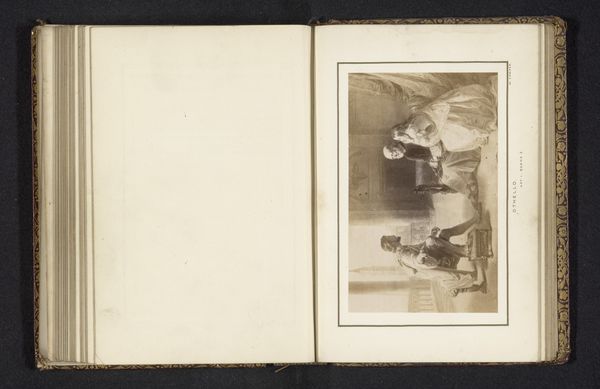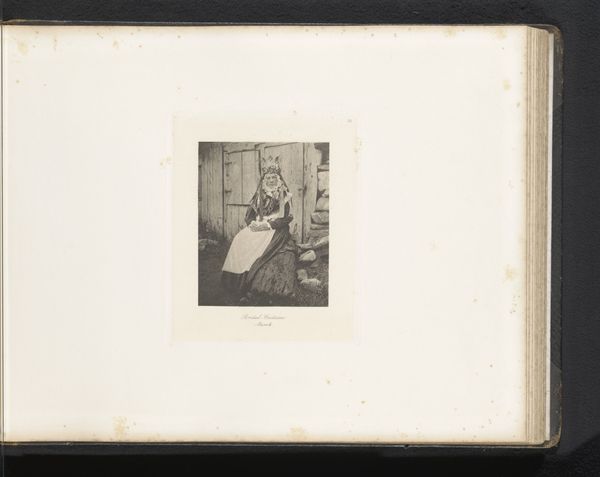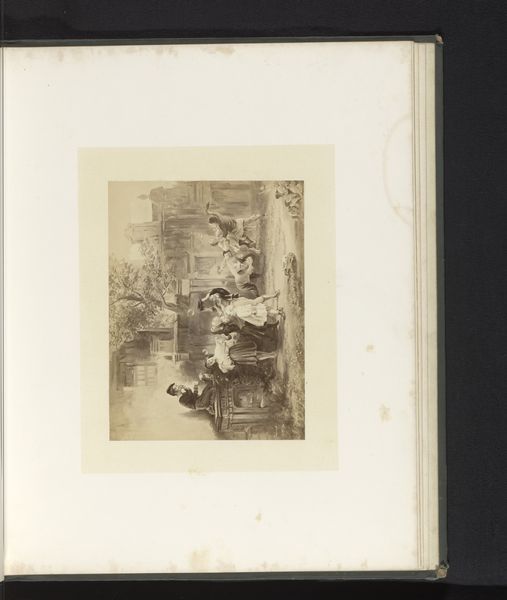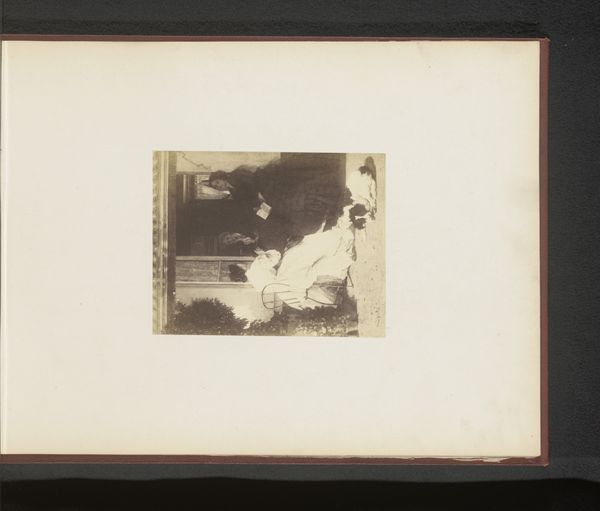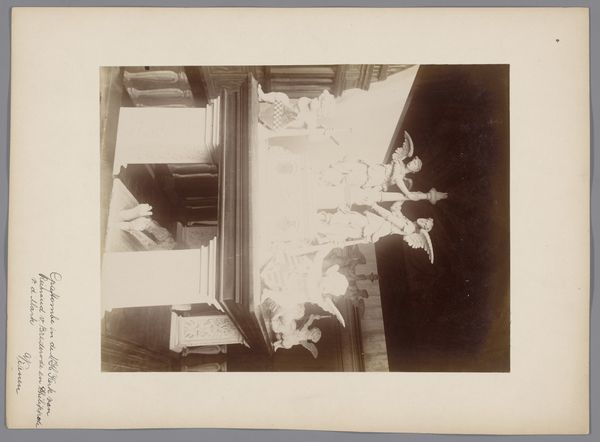
print, photography, gelatin-silver-print
#
portrait
# print
#
photography
#
gelatin-silver-print
#
academic-art
#
realism
Dimensions: height 138 mm, width 109 mm
Copyright: Rijks Museum: Open Domain
Curator: This is a photogravure reproduction of Florent Willems’ painting, “Le cachet," dating from before 1863, part of the Rijksmuseum collection. The photograph employs the gelatin silver process, a technique that would have allowed for multiple reproductions. It's a genre scene, seemingly frozen in time. Editor: It’s so static! The tonal range is quite limited, flattening the scene. And there's something inherently sad about it. It's almost like witnessing a play stopped mid-act. I’m getting a vague sense of loss, a muted sort of resignation. Curator: I see your point. Genre painting in the 19th century, especially works like Willems', often depicted scenes of bourgeois domesticity. This reproduction likely circulated among a middle-class audience eager to emulate the lifestyle depicted. The woman, perhaps a widow based on her clothing, is focused on sealing a letter. We should contextualize this artwork in terms of the rise of photographic reproductions, enabling art to enter broader social spheres. Editor: Interesting, yes, context matters so much. Thinking about it from the woman’s perspective though: it does speak volumes about the limitations imposed on women during that era. Her world is that room. A man looking into her is probably deciding something to do with her life. The power dynamics there—between genders, classes—they all come crashing down with her. Does the sealing of that letter suggest some limited autonomy, or another form of controlled communication? The painting aesthetic, though technically impressive, serves as a lens onto these broader societal structures, where certain individuals' agency trumps others. Curator: I never looked at the work from that perspective before; thinking about power and inequality certainly lends another level of meaning to what, on the surface, feels like a simple illustration of bourgeois existence. It brings forth important discussions regarding identity, class, and the gaze. Perhaps its ability to stir reflection makes this old piece surprisingly contemporary? Editor: It does for me, at least. Curator: I see that the conversation on perspective is always very needed. Thanks for opening my eyes. Editor: Thanks for walking me through this too.
Comments
No comments
Be the first to comment and join the conversation on the ultimate creative platform.
